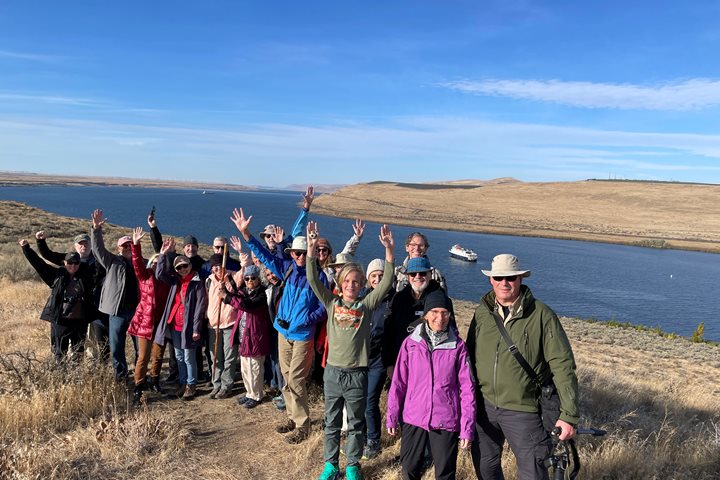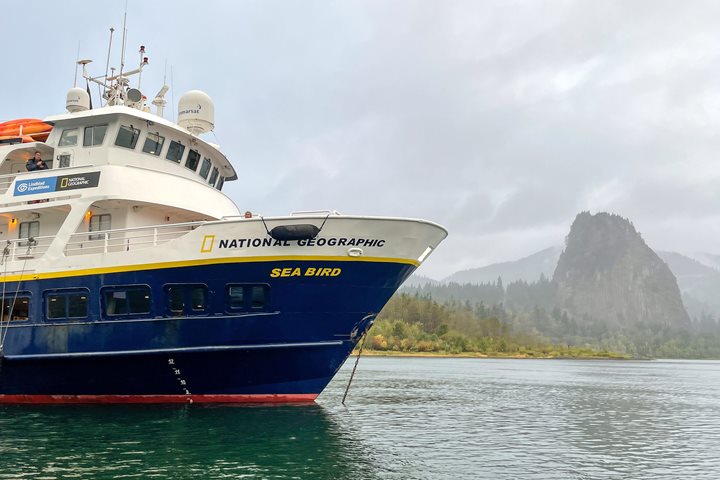We spent the day traveling through the lower reaches of the Snake River. This part of the world, angular and sparse, was shaped by some of the most horrific, spectacular and thrilling events of geologic history—the Bretz floods. At the end of the Ice Age, a glacial dam fragmented, releasing a flood of biblical proportions over eastern Washington. It scoured the land, stripping some of the world’s richest soils away, leaving raw bare bones of basalt. Once broken, the ice dam formed again and again, and the torrents repeated dozens of times.
Ascending the Snake River, we approached Lower Monumental Dam just after breakfast. Some of us hopped into our expedition landing craft for an intimate look at the inside of a Snake River lock. For the rest of the morning, we wound past the layer-cake landscape of the Columbia Basin.
By afternoon, we reached the mouth of the Palouse River. Most of us rode by bus up to Palouse Falls. This 185-foot waterfall is a thin ribbon that drops into a huge circular basin—another feature where today’s flow of water—though magnificent—is but a trickle compared to that of the Pleistocene.
Some of us braved the unusually rainy conditions to boat the flooded lower reaches of the Palouse. We saw basalt cliffs that once sheltered 10,000 years of Native inhabitation and now house wrens, owls and doves.
Though wrought of sequential disaster, the landscape of the Snake is beautiful. Its layered composition reflects the many layers of history that enrich this sparse region.







